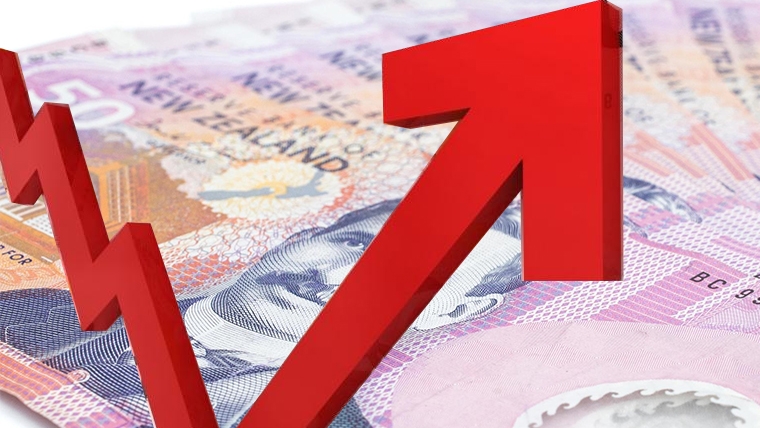
Risk appetite recovered further, although in the past few hours the VIX index has been tracking higher and early US equities gains have morphed into losses. US Treasury yields have pushed higher and the NZD has outperformed, sustaining most of the gain seen after yesterday’s labour market data.
After the wild ride in markets that began just over a week ago, for a second session some sense of normality has returned. Getting some attention in afternoon trading yesterday was a speech by BoJ deputy Governor Uchida, the first public BoJ comments since last week’s rate hike. His comments were interpreted as dovish by the market, where he said that “the bank will not raise its policy interest rate when financial and capital markets are unstable”.
The yen significantly weakened after his comments and risk appetite recovered further, although one might say that the market is reading too much into his comments. After all, the next BoJ meeting seen to be live is still over twelve weeks away and market conditions are likely to be quite different by then. As headlined by the FT, wiser heads argue that the unwinding of the yen carry trade still threatens markets. While no one exactly knows how big the yen carry trade had become, the general view is that there is still some way to go.
Apart from Uchida’s speech, newsflow has been light. The weaker yen helped support a gain of 1.2% for the Nikkei 225 index while the Euro Stoxx 600 index closed up 1.5%. In the US, the S&P500 index was up as much as 1.7% in early morning trading but the gain has since been eroded and it is down 0.6% as we go to print.
Global rates are higher and the US Treasuries curve showing a steepening bias, with the 2-year rate up 3bps to 4% and the 10-year rate up 8bps to 3.97%. Not helping the long end, an auction of $42b of 10-year Treasuries showed tepid interest, with a bid-cover ratio of 2.32, the lowest since December 2022 and issued at 3.96%, just over 3bps higher compared to the prevailing market rate. The market will have to absorb $25b of 30-year bonds tomorrow.
Oil prices are up over 2½% with Brent crude trading back over USD78 per barrel. Higher risk appetite is likely behind some of the move, while traders are also keeping a close eye on developments in the Middle East after Iran’s promise to retaliate against Israel following the assassinations of Hezbollah and Hamas leaders. Trump said that he will immediately fill up the US Strategic Petroleum Reserve if he becomes President. The SPR is at its lowest level since 1983 and filling it up would add hundreds of millions of barrels to demand.
In currency markets, as noted the yen weakened significantly after Uchida’s comments and most of that weakness has been sustained. USD/JPY is up 1.7% for the day and currently trades at 146.90. NZD/JPY is up 2½% to 88.0, with the NZD outperforming on higher risk appetite and with an added boost following yesterday’s labour market data (see below). From around 0.5950, the NZD traded a high of 0.6025 overnight and it currently sits just under 0.60. The AUD recovered to a high of 0.6575 overnight and has since fallen back down to 0.6515. NZD/AUD is higher but meeting some resistance just under 0.92. The NZD continues to recover against GBP and EUR, currently 0.4725 and just under 0.55 respectively.
NZ labour market data didn’t help answer the question whether the RBNZ will kick start the easing cycle next week, even if most followers agree that easier policy is entirely appropriate, with the economy mired in recession and inflation falling steadily towards target. The HLFS showed unemployment rate rising to a fresh three year high of 4.6%, in line with the Bank’s May projection, while employment surprisingly rose by 0.4% q/q. Both figures conveyed a slightly stronger labour market than the market expected, but digging deeper the first quarterly contraction in hours worked in almost three years – down a notable 1.2% q/q – and a 0.5% fall in filled jobs measured by the separate QES both seemed more consistent with the message from previously released labour market indicators.
By the close the OIS market was pricing in a close to an even bet for a 25bps rate cut next week and there was a further paring of rate cut expectations for future meetings. Still, the market prices in 125bps of cuts for the next four meetings through to February, suggesting that a 50bps cut will be thrown into the mix at some stage. Near term bill futures were up 14-15bps in yield terms and the aggressive sell-off at the short end resulted in the 2-year swap rate closing up 13bps to 4.70% and the 10-year rate up 9bps. The NZGB curve showed a similar flattening bias and rate moves.
In the day ahead, RBA Governor Bullock will be speaking this afternoon talking about the Australian economy through a “regional lens”, the RBNZ releases its survey of expectations, with 2-year inflation expectations likely to show further decline, and US jobless claims data tonight.

We welcome your comments below. If you are not already registered, please register to comment.
Remember we welcome robust, respectful and insightful debate. We don't welcome abusive or defamatory comments and will de-register those repeatedly making such comments. Our current comment policy is here.